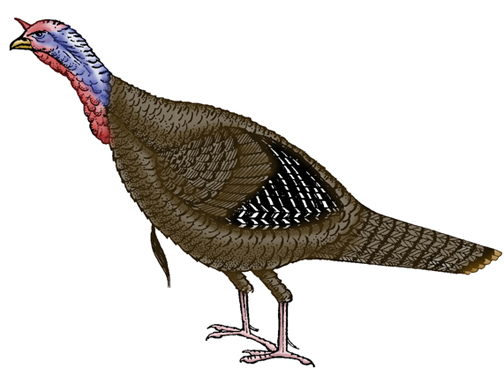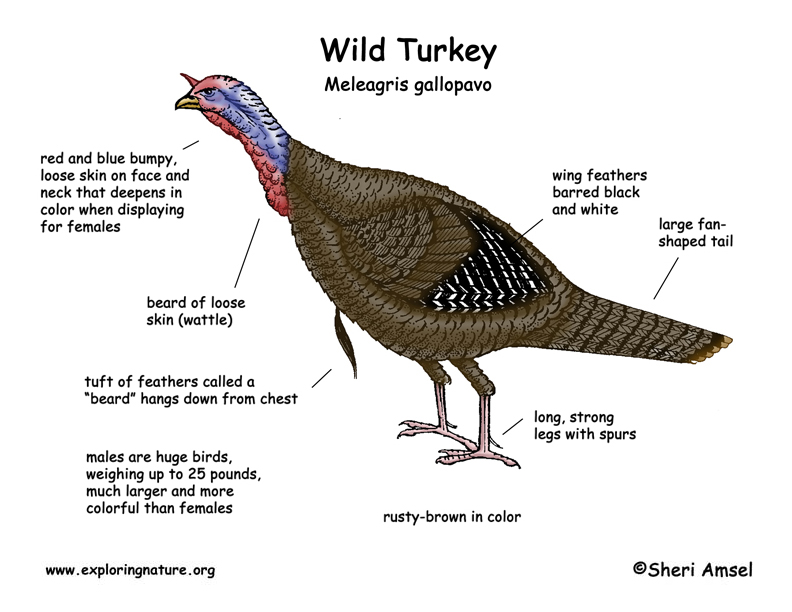

They live in southern Canada south to Florida and in spotty places throughout the west and into Mexico.
They live in open woodlands and clearings. They are often seen along roadways.
They look like tame turkeys except they are thinner with rusty-brown tail feathers instead of white. They are a huge bird, weighing up to 25 pounds. Instead of feathers on their face and neck, they have bumpy, loose skin. They have a large fan-shaped tail and spurs on their long, strong legs. Males are much larger and more colorful with a beard of loose skin (wattle).
They travel in flocks. In the winter, there can be as many as 200 birds to a flock. They sleep (roosting) in trees at night and run when startled. They can fly, but they don’t unless they have to.
They eat fruit, seeds, acorns, insects and tree buds.
Their nest is just a depression in some dead leaves on the ground. Females lay 4 – 17 white eggs with reddish spots. After they hatch, they follow the female and learn to find food. Females with babies join together to form big groups of 30 or more birds. Males do not help with caring for the young.
Kingdom: Animalia
Phylum: Chordata
Subphylum: Vertebrata
Class: Aves
Order: Galliformes
Family: Phasianidae
Subfamily: Meleagridinae
Genus: Meleagris
Species: M. gallopavo
When you research information you must cite the reference. Citing for websites is different from citing from books, magazines and periodicals. The style of citing shown here is from the MLA Style Citations (Modern Language Association).
When citing a WEBSITE the general format is as follows.
Author Last Name, First Name(s). "Title: Subtitle of Part of Web Page, if appropriate." Title: Subtitle: Section of Page if appropriate. Sponsoring/Publishing Agency, If Given. Additional significant descriptive information. Date of Electronic Publication or other Date, such as Last Updated. Day Month Year of access < URL >.
Amsel, Sheri. "Turkey (Wild)" Exploring Nature Educational Resource ©2005-2024. December 13, 2024
< http://www.exploringnature.org/db/view/117 >

